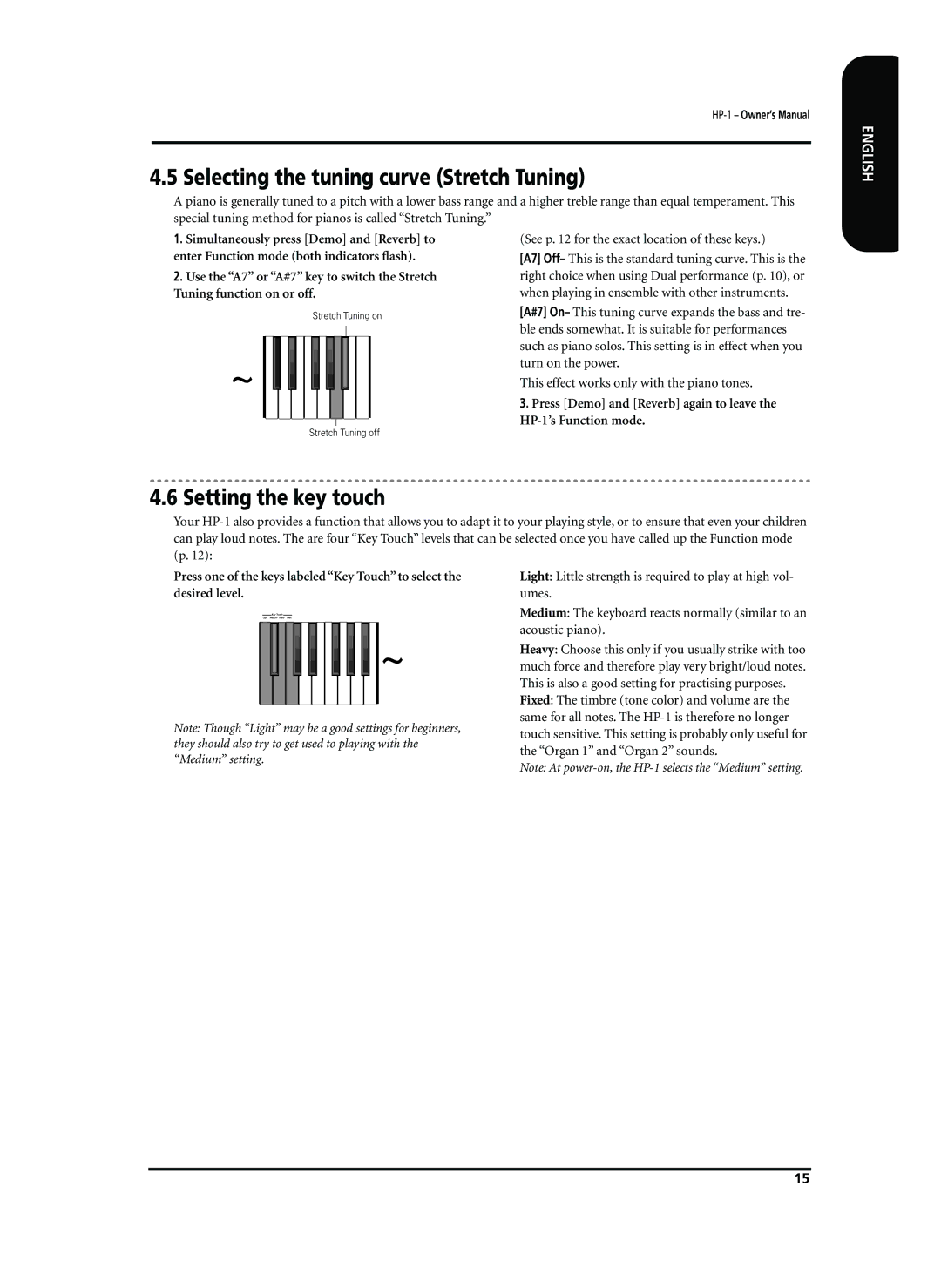
4.5 Selecting the tuning curve (Stretch Tuning)
A piano is generally tuned to a pitch with a lower bass range and a higher treble range than equal temperament. This special tuning method for pianos is called “Stretch Tuning.”
ENGLISH
1.Simultaneously press [Demo] and [Reverb] to enter Function mode (both indicators flash).
2.Use the “A7” or “A#7” key to switch the Stretch Tuning function on or off.
Stretch Tuning on
Stretch Tuning off
(See p. 12 for the exact location of these keys.)
[A7] Off– This is the standard tuning curve. This is the right choice when using Dual performance (p. 10), or when playing in ensemble with other instruments.
[A#7] On– This tuning curve expands the bass and tre- ble ends somewhat. It is suitable for performances such as piano solos. This setting is in effect when you turn on the power.
This effect works only with the piano tones.
3.Press [Demo] and [Reverb] again to leave the
4.6 Setting the key touch
Your
Press one of the keys labeled “Key Touch” to select the desired level.
Note: Though “Light” may be a good settings for beginners, they should also try to get used to playing with the “Medium” setting.
Light: Little strength is required to play at high vol- umes.
Medium: The keyboard reacts normally (similar to an acoustic piano).
Heavy: Choose this only if you usually strike with too much force and therefore play very bright/loud notes. This is also a good setting for practising purposes.
Fixed: The timbre (tone color) and volume are the same for all notes. The
Note: At
15
